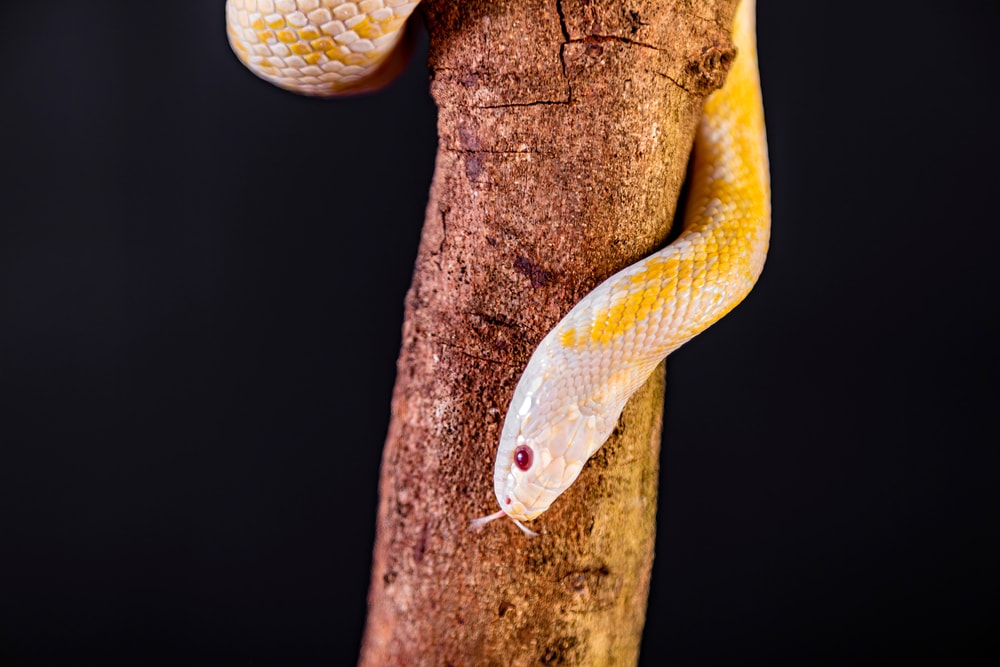
Virginia is home to about 30 snake species. Despite the common fear that humans have when encountering snakes, only 3 snakes in the state of Virginia are venomous. Snakes are actually very helpful creatures that help balance out ecosystems and maintain prey populations.
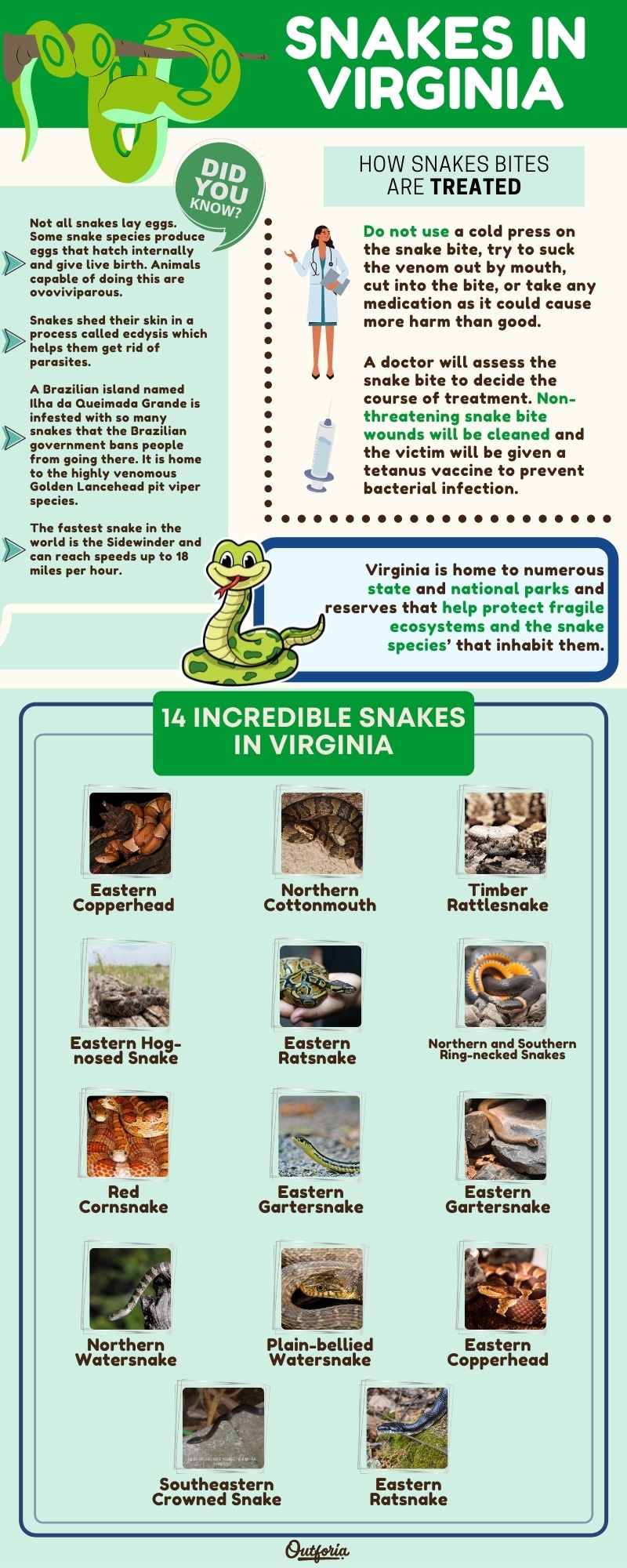
Share This Image On Your Site
<a href="https://outforia.com/snakes-in-virginia/"><img style="width:100%;" src="https://outforia.com/wp-content/uploads/2022/02/Snakes-in-virginia-infographics-02192022.jpg"></a><br>Snakes in Virginia Infographic by <a href="https://outforia.com">Outforia</a>Venomous Snakes in Virginia
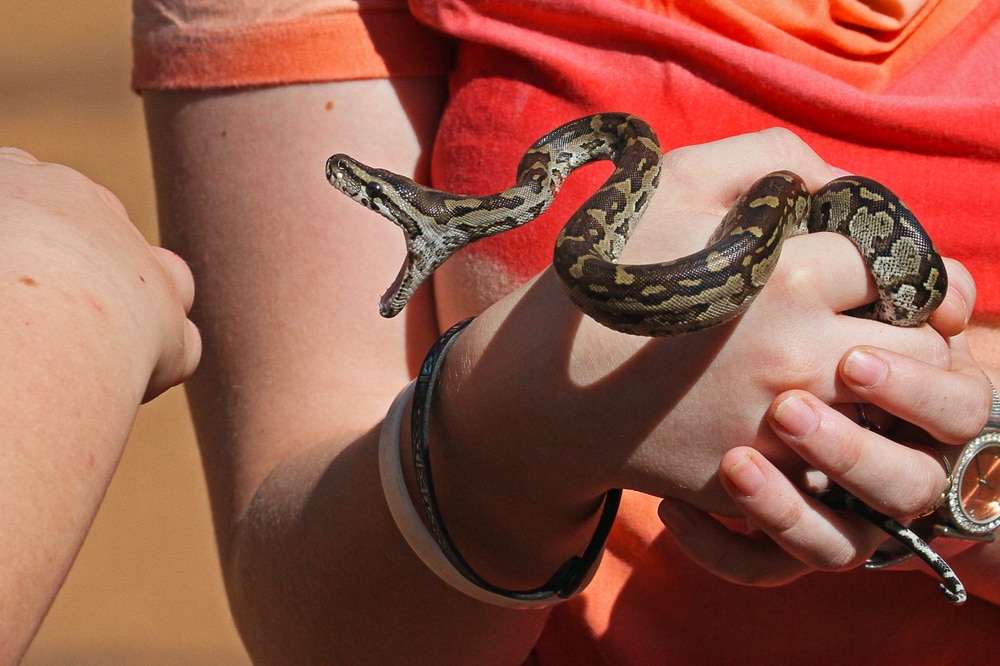
Identifying venomous snakes in Virginia is fairly easy because they have prominent visual tells. One characteristic that all three of the venomous snakes have in common is the shape of the pupil. All harmless snakes in the state have rounded pupils, while venomous snakes have vertical pupils.
1. Eastern Copperhead (Agkistrodon contortrix)
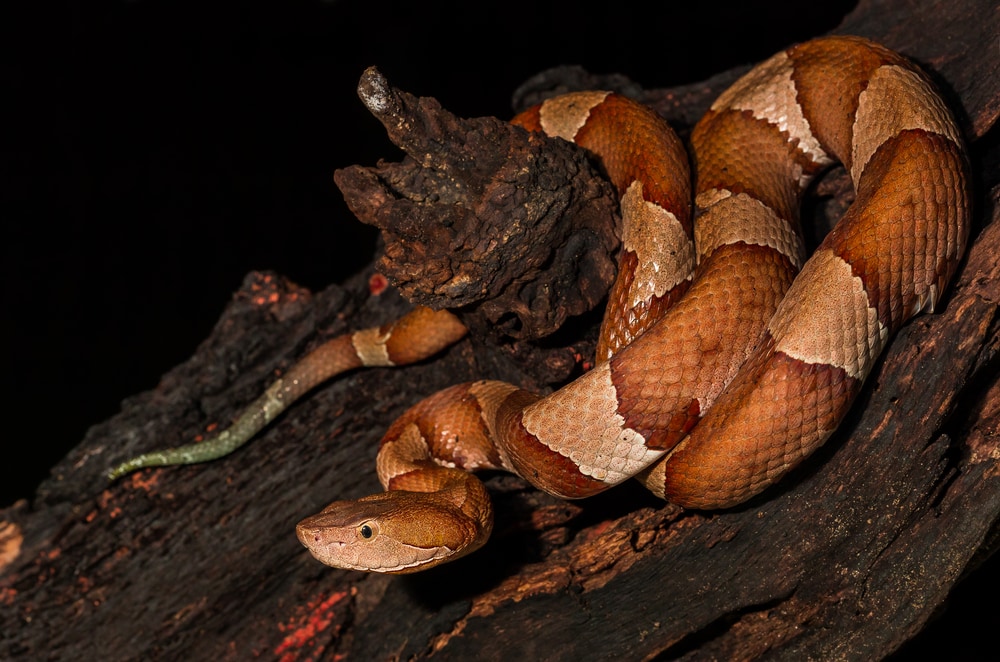
The Eastern Copperhead snake is the least venomous snake out of the three. They are easily identifiable by their dark, hourglass-shaped color bands that stretch across the top of their body. Many look-alikes for these snakes include bands that are similar, but do not stretch all the way across the top of the body or are more rounded in shape.
Characteristics
The average length of the eastern copperhead is 24-36 inches (60-90cm) with a record length of 53 inches (134cm). Baby copperheads have the same color patterns as adults with the addition of a sulfur-yellow colored tail. Eastern Copperheads prey on small mammals and reptiles, such as voles, shrews, salamanders, and lizards.
The copperhead is also a part of the pit-viper snake family. Pit-viper snakes have heat-sensitive pits located on the head of the snake between the eye and nostrils. The pit is used as a heat sensor to help the snake identify prey.
Habitat
Eastern Copperheads, also known as the copperhead moccasin, are commonly found all across the state of Virginia. They live in rural, suburban, and urban places in wooded areas, marshes and swamps, and rocky areas. Although the copperhead can be found statewide, they are most commonly seen in mountainous areas where woods and forests are most abundant.
Venomous Bite of an Eastern Copperhead
The Copperhead is fairly docile and will only strike when they feel threatened. A venomous bite from the copperhead will result in major pain and swelling, but is very rarely fatal. When the copperhead is about to strike it will coil its body and the head will be slightly elevated.
2. Northern Cottonmouth (Agkistrodon piscivorus)
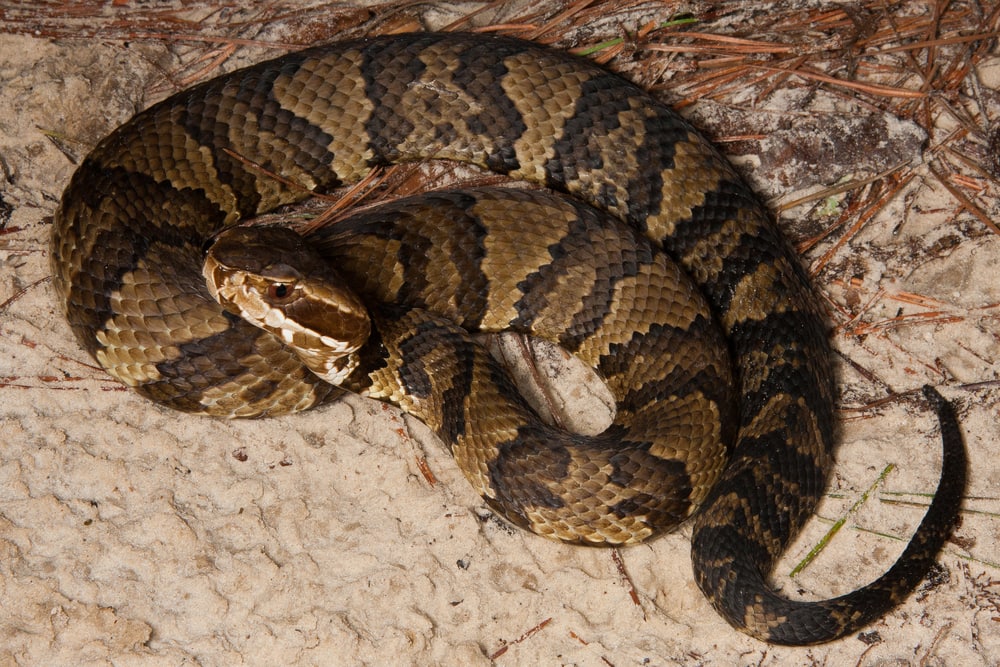
Native to Southeastern, Virginia, the Northern Cottonmouth is a heavily-bodied snake with an average length of 30 to 48 inches (76-120cm). They can often be confused with the Northern Watersnake, which is harmless.
Habitat
The Northern Cottonmouth is semi-aquatic and can be found in low-land habitats close to rivers, streams, freshwater, and wetland areas.
Characteristics
Common northern cottonmouth names are the water moccasin, black mocassin, and the saltwater rattler despite not having a vibrating tail. They are also a pit-viper with heat sensors and prey on juvenile snakes and other reptiles, amphibians, fish, small mammals, and invertebrates.
The color pattern of the dorsal scales on top of the body and tail can be yellowish to black with black crossbands that are wide on the sides and more narrow in the center. The outer edges of the color bands are darker in color than the center.
Juvenile water moccasins are born with the same color patterns as adults, but tend to be brighter in color and have a sulfur-yellow tail tip.
Is Northern Cottonmouth Venom Fatal?
The venom of the Northern Cottonmouth can be fatal to humans because it contains hemotoxins, which breaks down blood cells, prevents clotting or coagulation, and can lead to hemorrhaging. A bite from these semi-aquatic creatures will cause extreme pain, possible internal bleeding, and can lead to tissue and muscle damage.
3. Timber Rattlesnake (Crotalus horridus)
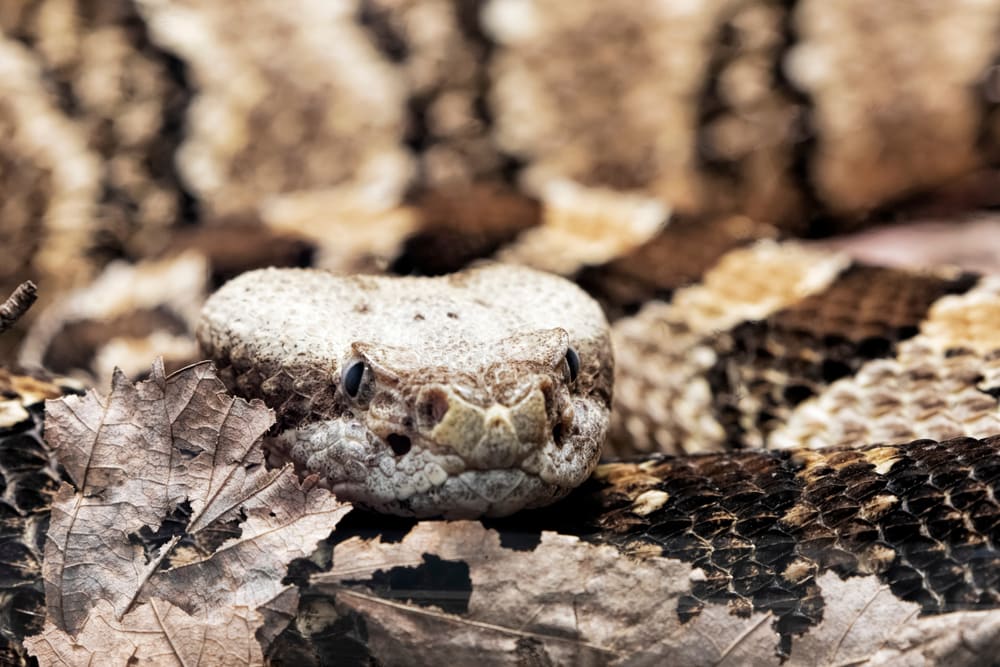
Commonly known as the Canebrake Rattlesnake, the Timber Rattlesnake is a venomous viper with intricate chevron or zig zag-shaped blotches and crossbands colored dark brown to black on the dorsal scales. They have a black tail and triangular head with heat sensor pits. Juveniles are patterned the same as adults from birth.
Habitat
Canebrake rattlers reach an average length between 2.5-5 feet (.7-1.5m) They are commonly found in the western regions of the Blue Ridge, Valley and Ridge, and portions of the Appalachian Plateau area. They are least common in the Coastal Plain region, but can be seen in the southeastern corner of Virginia that borders North Carolina.
Timber rattlesnakes can be found in forests, farmlands, and mountainous areas. They are commonly known as timber rattlers in the western region and canebrakes in low-elevation areas of the east. It is less common to see timber rattlesnakes within a city or suburb.
How Venomous is the Timber Rattlesnake?
Harmless Snakes in Virginia
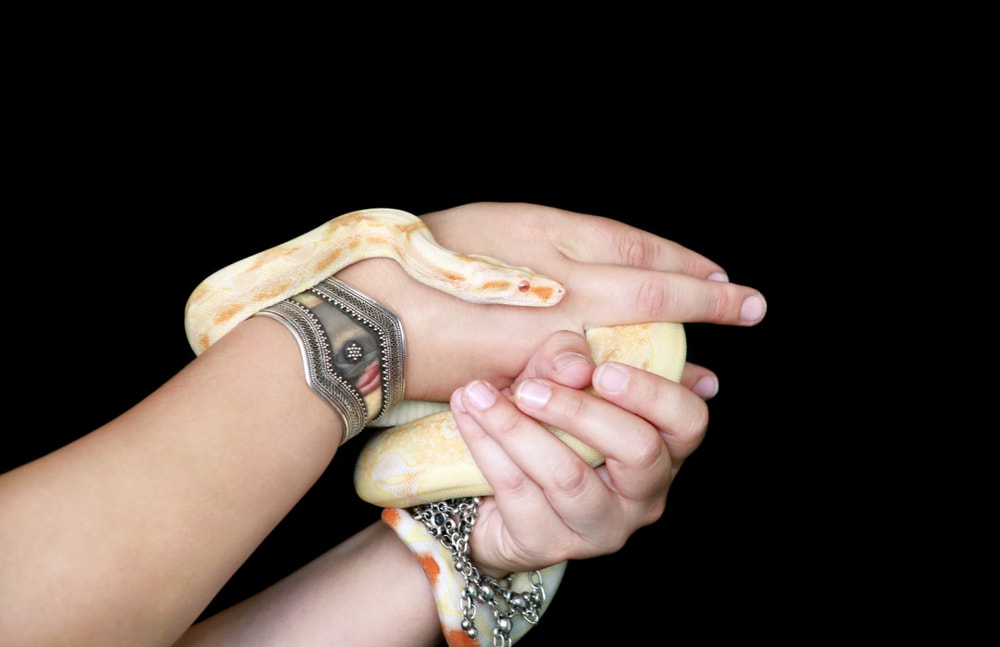
A majority of the snake species in Virginia are harmless, so if you are out exploring nature and stumble across a slithering snake friend, it most likely is not venomous. It’s important, however, to leave snakes alone in their natural habitat.
1. Eastern Hog-nosed Snake
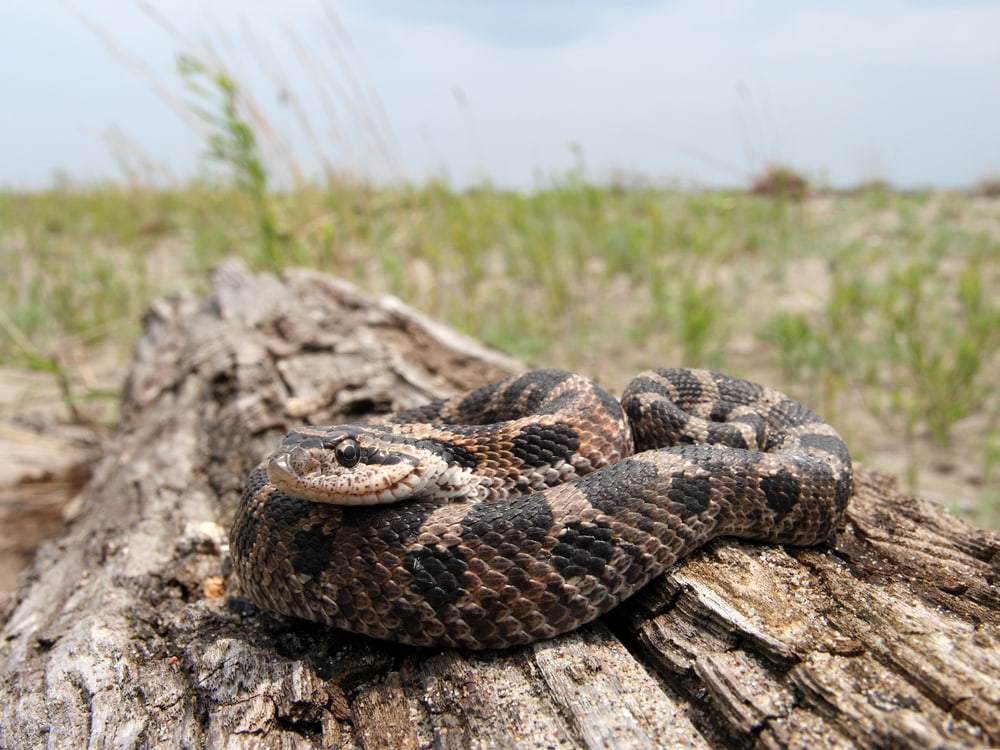
Easily identifiable by its flat-shaped head and upturned snouts, the Eastern Hog-nosed snake is found in most portions of Virginia. These reptilian critters like sandy soils and reside in woodlands, fields and farmlands, and coastal areas.
Characteristics
Eastern hog-nosed snakes grow to be about 20 to 33 inches (0.5 to 0.8 meters) and have two common color phases, patterned and melanistic. When a hog-nosed snake is in the pattern phase it will have dark-brown or black blotches with alternating black spots on its sides. The melanistic phase is primarily black in color with no patterns. Baby Eastern Hog-nosed snakes will resemble the patterns of adults, but may have pinkish colored scales. The primary food source of this snake is toads, but they do feed on other small mammals and amphibians.
Behaviors
Hog-nosed snakes are non-aggressive and will play dead if they feel that they are threatened by lying on its back and becoming limp. They are quite intelligent as they will look around to see if the threat has gone away to perk back up and slither away.
2. Eastern Ratsnake (Black Ratsnake)

Often called the Black Ratsnake for their dark color, Eastern Ratsnakes call fields, woodlands, and farmlands their home. They can be found statewide in Virginia and are a common rural backyard neighbor that range from 42-72 inches in length.
The Eastern Ratsnake was the largest snake recorded in Virginia, measuring at 6’- 7’ (2m) in length.
Helpful and Harmless
Black ratsnakes are harmless and actually helpful as they are predators of small rodents and pests that lurk around buildings, acting as a natural pest control. Eastern ratsnakes will emit a foul odor to deter threats from predators and humans, but will often slither away when they spot you.
They do not appear often in the cold season because they brumate, which is the hibernation of cold-blooded species, and only come out to find water. Much of their diet consists of bird eggs, rodents, and amphibians.
Characteristics
The nickname black ratsnake comes from their uniformly black color that covers the entire body, sometimes with faint black stripes on a grayish-black body.
Baby black ratsnakes do not resemble the same colors as the adults. Juveniles have dark-brown to black blotches on the dorsum and a black and white to gray peppered body.
3. Northern and Southern Ring-necked Snakes

The Northern and Southern Ringneck snakes are quite small, with an average length of 10-15 inches (10-15cm). These pocket-sized snakes get their name from the cream to yellow colored band that wraps around their neck, resembling a collar. The rest of their body is a bluish-black color.
Characteristics
The Northern ringneck snake has a color band that wraps fully around the neck, versus the southern ringneck snake which has an incomplete color band that is separated on the top of the neck.
The ringneck snake is hardly encountered by humans as they like to hide in wooded areas and forests under leaf litter and rocks. A majority of their diet consists of worms, salamanders, and small lizards.
Behaviors
Ringneck snakes are also a common household pet for snake lovers. They have quite shy personalities and are very delicate due to their small size, so they are not considered a good pet for beginners.
Although they are relatively harmless, ringneck snakes do expel venom when attacking. The venom is very mild and only strong enough to be harmful to their prey. It does not cause any harm to humans.
4. Red Cornsnake
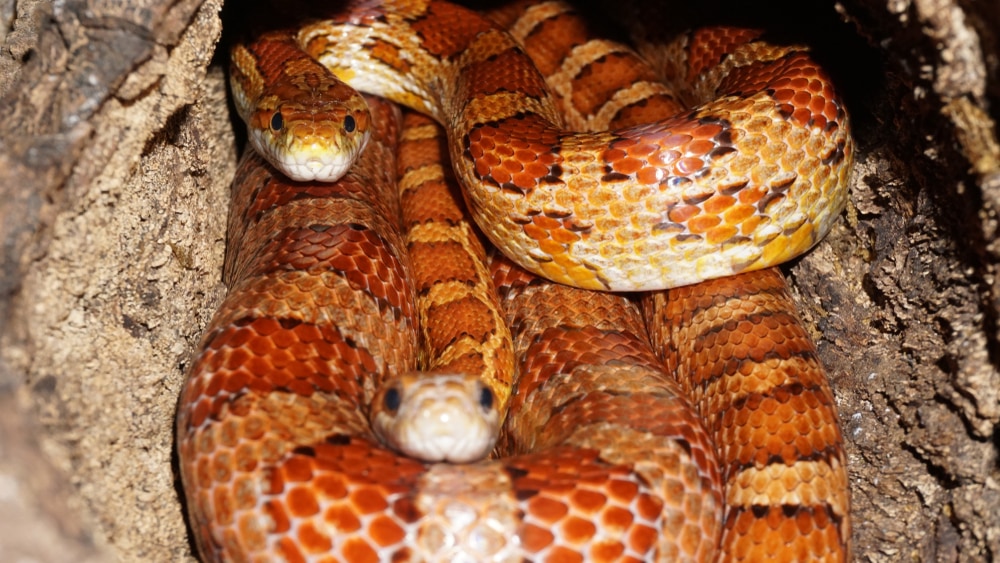
Named for its brilliant red color pattern, the Red Cornsnake is commonly found in the central and northwestern regions of Virginia. They have chestnut to red square-shaped blotches on the dorsal scales and tail with light to reddish brown colors surrounding the rest of the body.
Baby red cornsnakes have similar patterns to adults, with slight changes in color with brown to dark brown blotches with a gray to reddish-orange body.
Characteristics
Cornsnakes are harmless, but often confused with eastern copperheads. The biggest difference between the two is the brighter color pattern and the shape of the blotches, with cornsnake blotches being more square in shape rather than the hourglass shape of the copperhead.
Red cornsnakes are terrestrial snakes and very secretive so they are not seen often. They live in forested areas and can occasionally be found in pine-dominated agricultural areas.
Diet
Cornsnakes prefer to prey on rodents and occasionally lizards. Due to their diet, cornsnakes are also a desired pet and do well in captivity. The effect on population due to pet trade is unknown, but urban development is a growing concern for this species’ population.
5. Eastern Gartersnake (State Snake of Virginia)
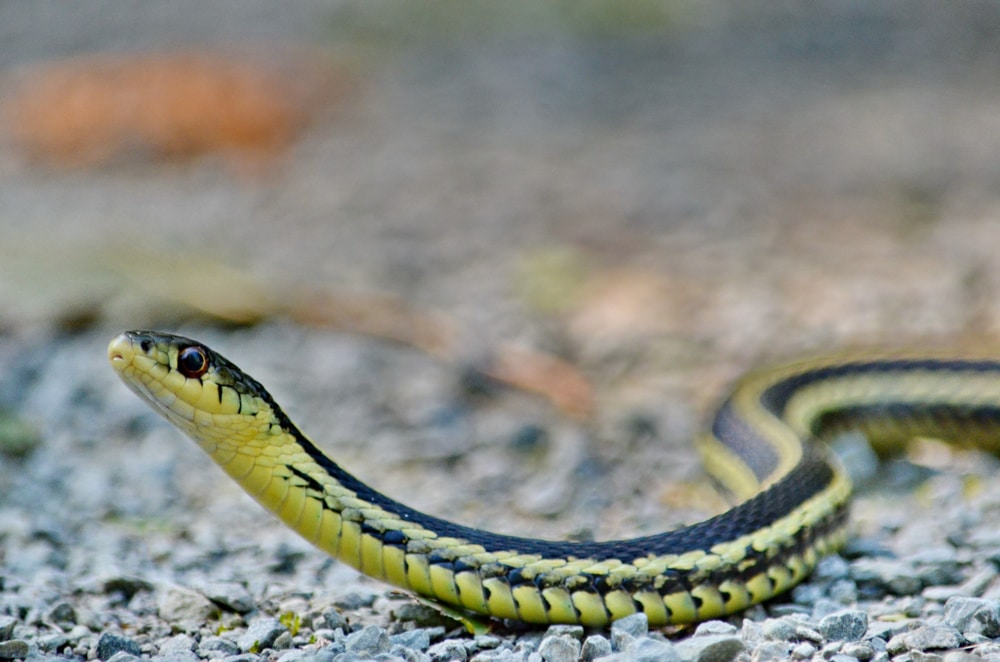
The Eastern Gartersnake is the state snake of Virginia. Commonly found across the entire state, these slithering creatures live in a variety of habitats, such as meadows, marshes, woodlands, and hillsides.
Characteristics
Eastern gartersnakes can have dark brown, green, or olive colored backs with a white to light yellow stripe running down the center from the head to tail. The Eastern Gartersnake became the official state snake of Virginia in February 2016.
The Eastern Gartersnake can grow up anywhere between 18 to 26 inches (0.5 to 0.7 meters) in length and can be fairly aggressive. They are non-venomous, but will often strike and bite upon threat and cause an allergic reaction to humans.
Diet
The diet of an eastern garter snake is primarily insects, amphibians, and earthworms. They will occasionally eat small mammals or anything that they can overpower.
You May Also Like: Discover Thee 25 Amazing Types Of Snakes Complete with Photos, Infographics, Facts, and more!
Finding A Snake In Your Home
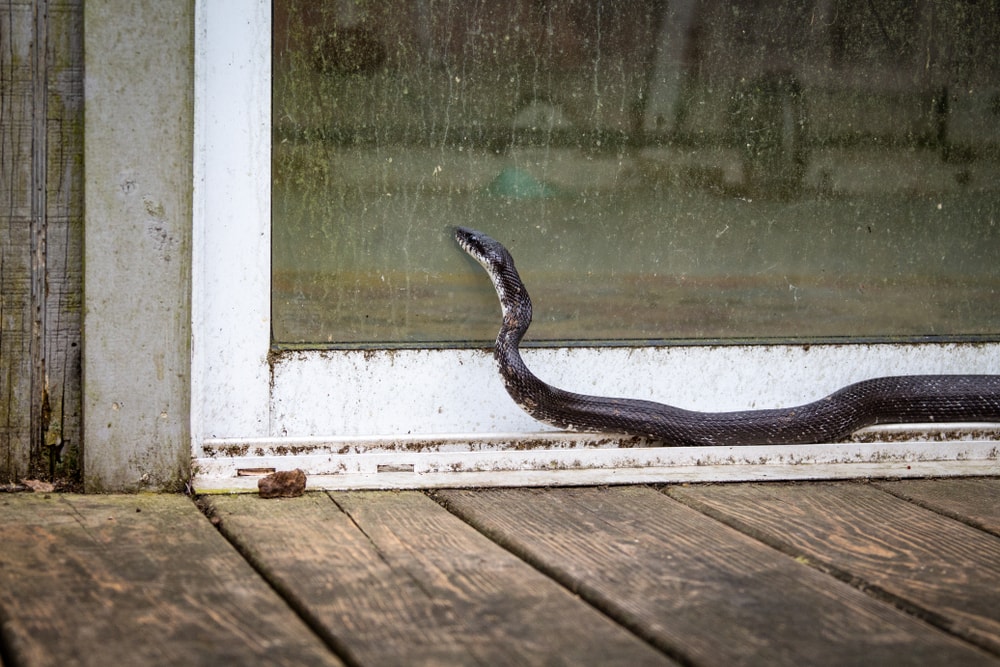
If you were to find one of the harmless snakes listed above in your home, it’s best to call wildlife control so they can safely remove the snake from your property. Snakes that find their way inside are likely to do so in search of food and do not mean to cause you any harm.
You may also like: Know the 15 Types of Snakes You Might Meet in Michigan With Images, Facts, and More!
Common Watersnakes in Virginia
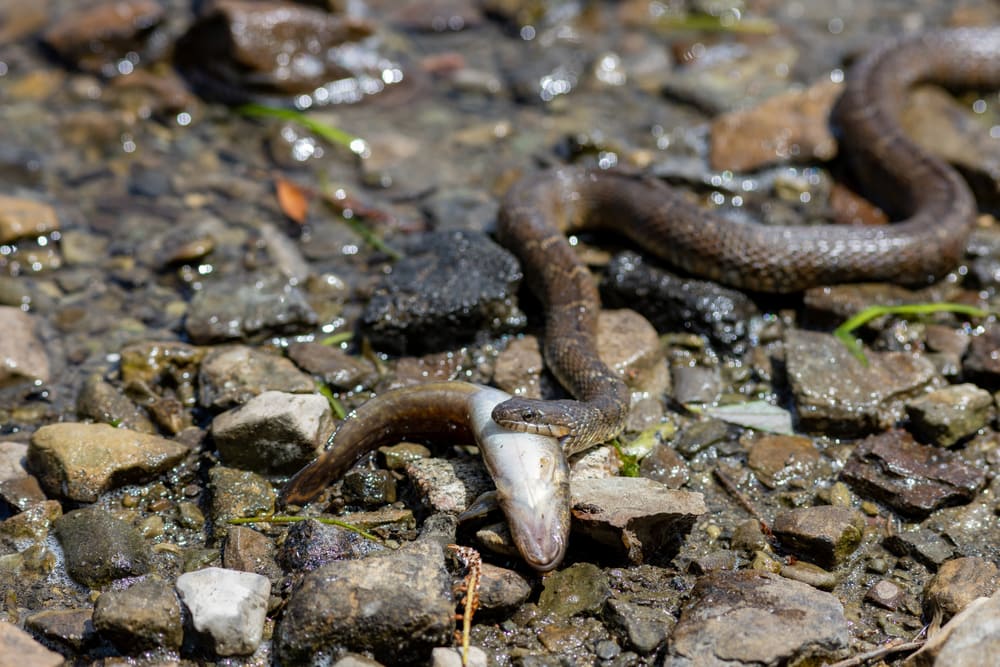
There are three species of watersnakes in Virginia.
- Brown watersnake
- Northern watersnake
- Plain-bellied watersnake
These three slippery serpents generally call the coastal region of Virginia their home because there is an ample amount of aquatic habitats for them to roam and find food.
1. Brown Watersnake
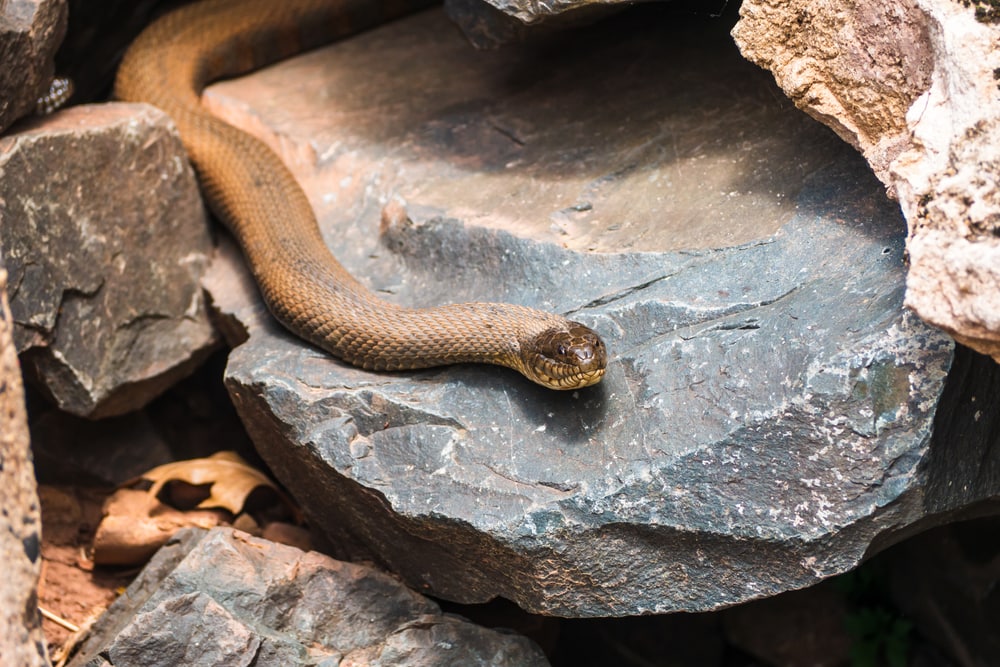
Commonly named the water rattler, the Brown Watersnake is a light brown to tan colored snake with dark brown to black square-shaped blotches that alternate on each side and on the midline of the body and tail.
Brown watersnakes can be found in the eastern Coastal Plain region of Virginia surrounding larger bodies of water, such as rivers, reservoirs, and marshes. These slithering serpents hang around overhanging vegetation near the bodies of water and prey on a variety of fish.
The brown watersnake species population is currently in decline due to water pollution.
2. Northern Watersnake
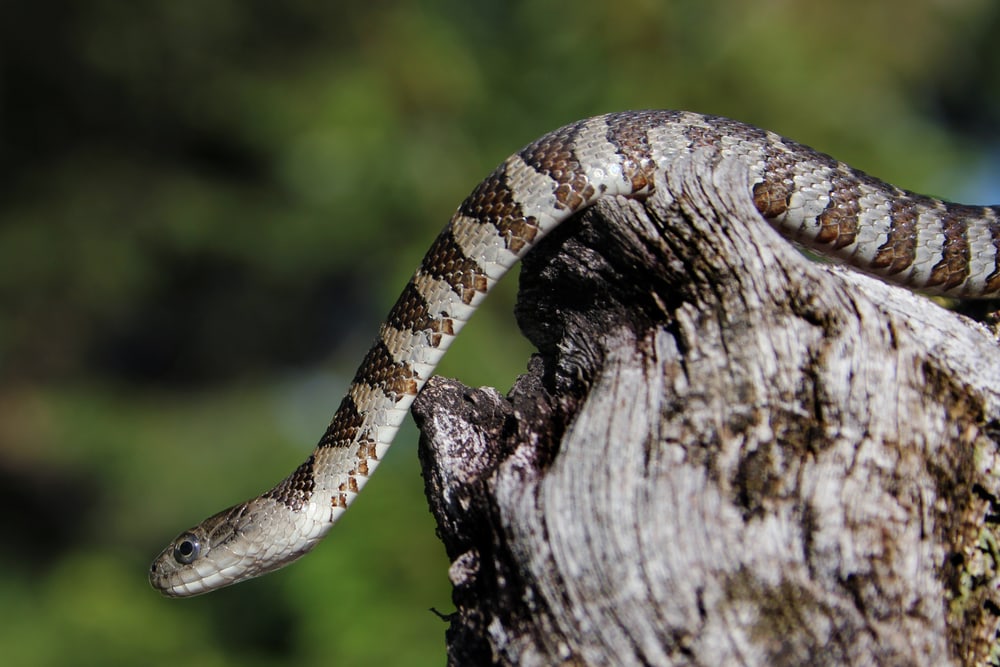
The Northern Watersnake is a native species to the Chesapeake Bay watershed, living in aquatic habitats such as lakes, swamps and marshes, and freshwater streams and rivers.
Northern watersnakes are often misidentified as a cottonmouth, but are harmless. They have a light brown to tan colored back with reddish brown color bands outlined in black. Their blotches differ from a cottonmouth because the blotches are wide in the middle of the back and more slim towards the sides. Baby northern watersnakes have the same color and pattern as adults.
Although they like to hang around bodies of water, the Northern Watersnake can be found in every region of Virginia.
3. Plain-bellied Watersnake
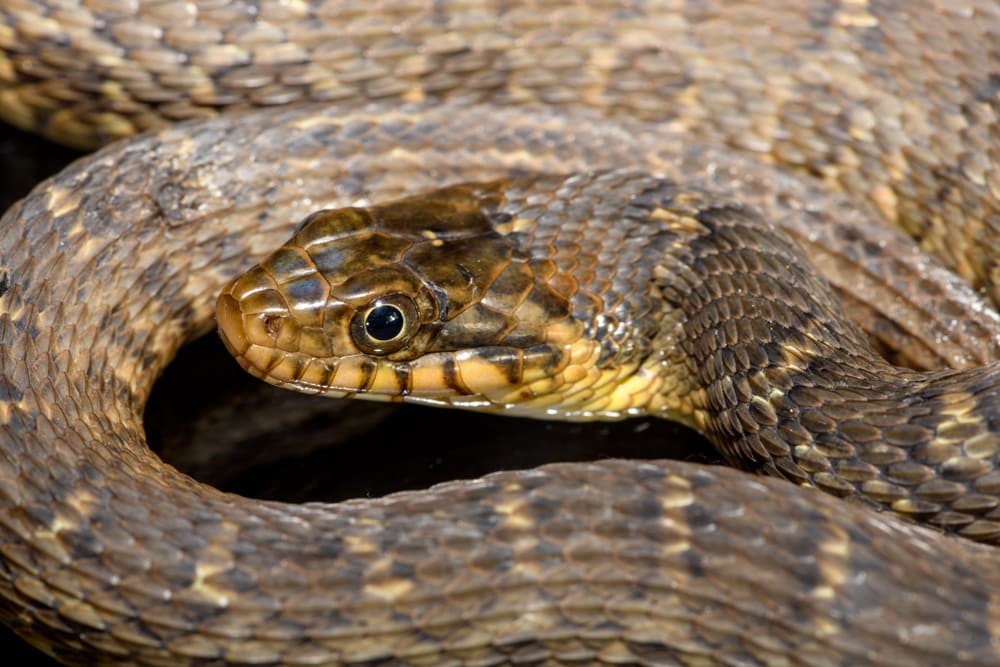
The Plain-bellied Watersnake is also commonly known as the copper or orange-bellied moccasin because of the red-orange color they possess on their belly. The average length of a plain-bellied snake is 30-48 inches (76-121cm).
These aquatic snakes are native to the southern coastal area of Virginia and like to live near lakes, rivers, and wetlands.
Baby copper-bellied snakes have a completely different pattern of alternating dark brown to black blotches on their back compared to adults which are primarily brownish black with little to no patterns.
Since the plain-bellied snake habitat is close to water, their diet consists mostly of amphibians and occasionally fish.
Common Snakes Seen All Over Virginia
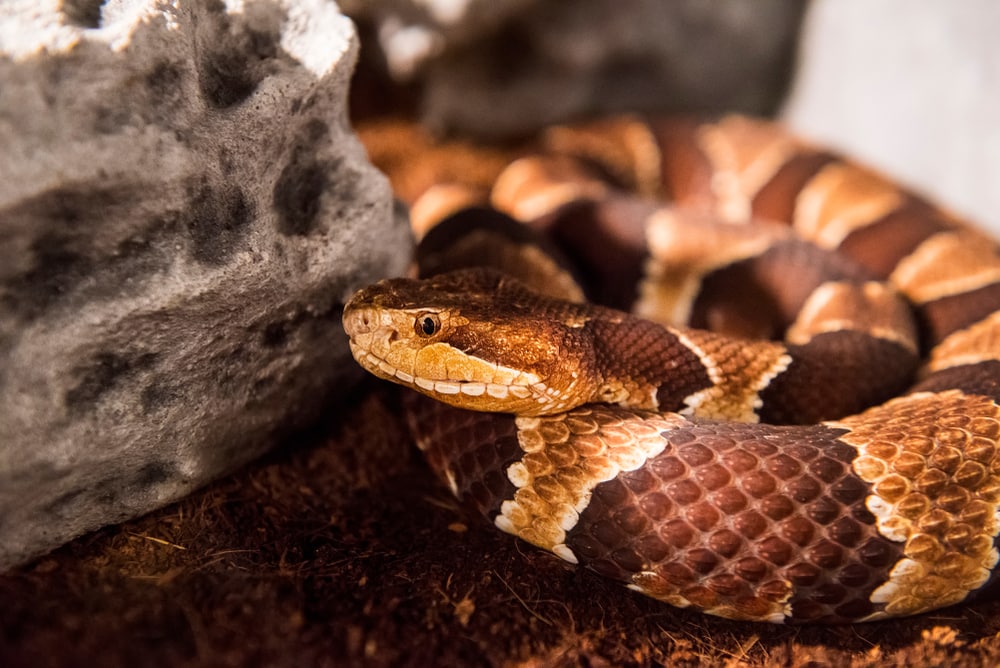
Many snakes are local to specific areas or regions within Virginia, but there are several types of snakes that can be found anywhere across the state.
The only venomous snake that is seen in the majority of Virginia is the Eastern Copperhead, which has been reported in almost every county.
Northern Rough Greensnakes have been reported all over Virginia, with the exception of a few counties in the west and southwest regions. They are very hard to miss with their distinctive bright green color and long, slender bodies.
Northern Black Racer snakes live in a variety of habitats all over Virginia. Adults are fully black in color, while juveniles possess round reddish-brown color blotches that become faint towards the tail and have a light tan body.
The Eastern Wormsnake, also called the milk snake, can be found statewide. The name of the Eastern Wormsnake is very fitting because these slithering creatures essentially look like a giant worm. They are light brown to brown in color and have lighter brown to pinkish underbellies.
Smallest and Largest Snakes in Virginia
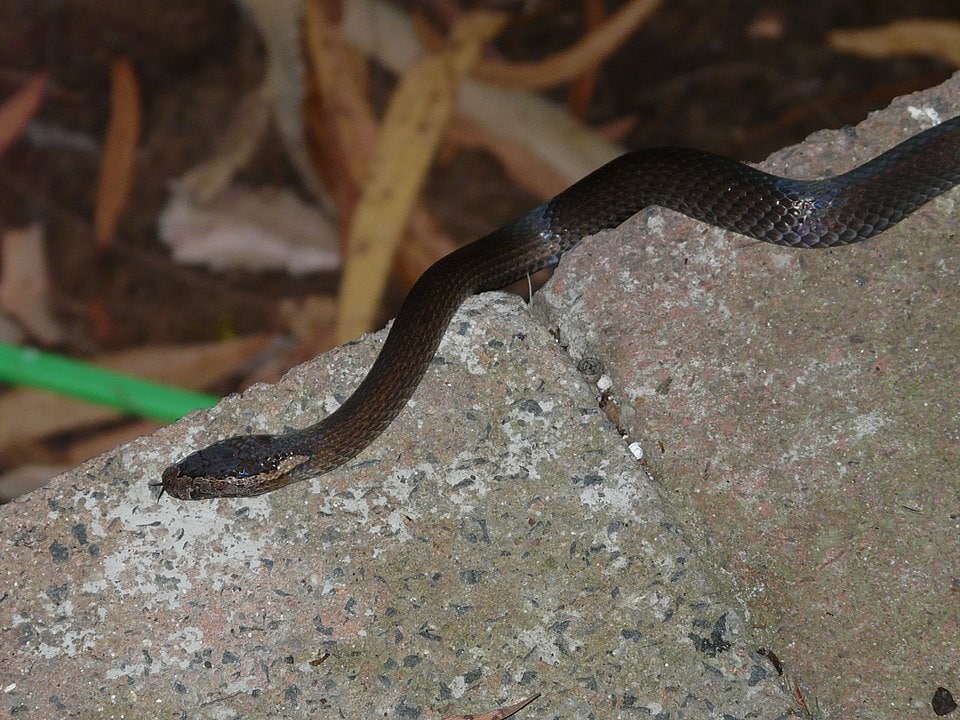
Southeastern Crowned Snake
The smallest snake in Virginia is the Southeastern Crowned Snake growing only 8-10 inches (20-25cm) long with the longest Virginia record length at 9.9 inches (22cm). Adults are light brown with a black head and black colorband around the neck.
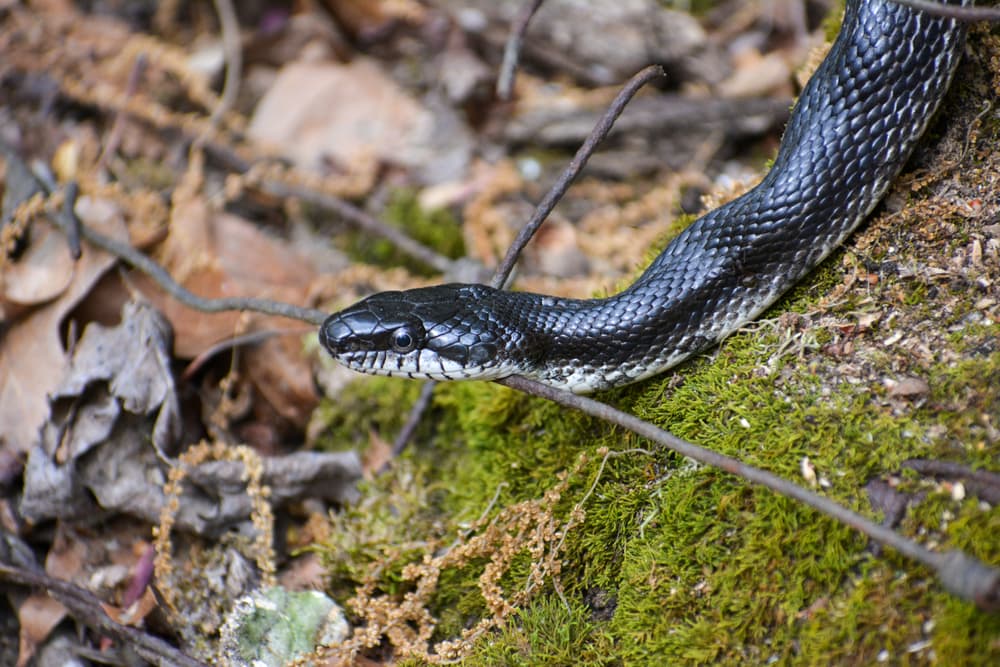
The largest snake in Virginia is the Eastern Ratsnake and averages 42-72 inches (106-182cm) in length, which is 12 inches longer than the second largest Northern Black Racer snake.
You May Also Like: This Is Your Guide Towards These 21 Different Types Of Rattlesnakes with Photos, Facts, Infographics, and more!
How Climate Change Is Affecting The Snake Populations

Reptiles are highly sensitive to temperature changes as they use the environment to help regulate their body heat. Climate change can negatively affect snake populations depending on the region. A majority of snake populations live in the southern region of the United States, deserts, and subtropical locations.
Altered temperatures can affect the times of prime breeding conditions for reptiles. As temperatures rise, snakes are forced to change migrating patterns, breeding time-windows, may have difficulty finding food, and become vulnerable to irregular temperature changes. These changes in activity can lead to depleting snake populations.
You may also like: Check Out the 7 Species of Majestic Owls in Florida: Complete with Images, Facts, and More!
Loss of Habitat
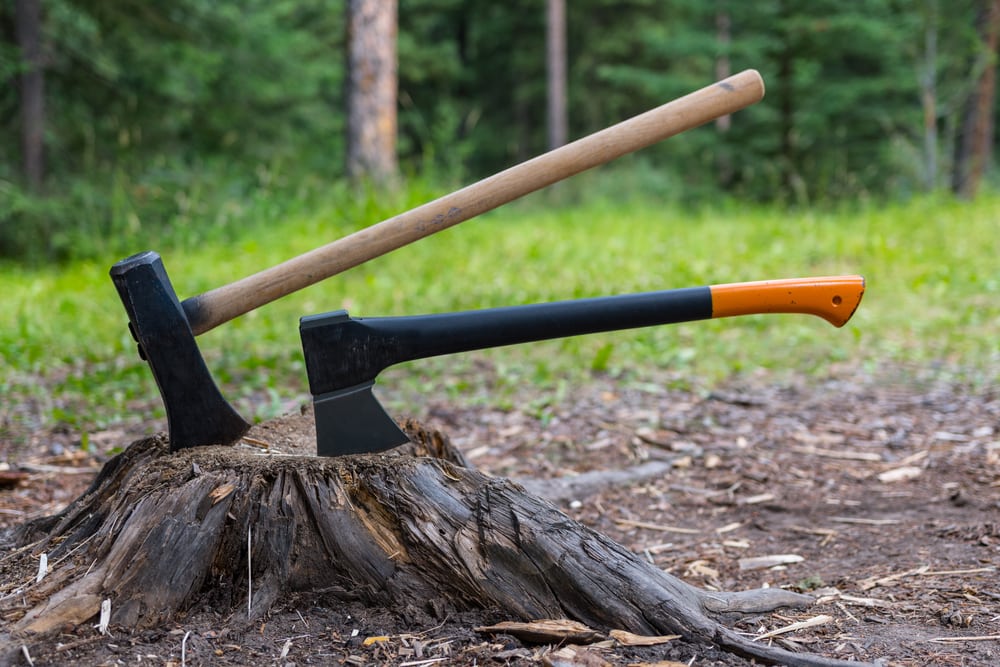
Increasing urban and agricultural development poses a threat to habitat loss for many species. According to the U.S. Fish and Wildlife Service, there are no snakes that are on the threatened and endangered species list in Virginia as of 2014. However, there are threatened and endangered snake species across other parts of the United States.
The San Francisco Garter Snake, found in California and Nevada, is currently labeled an endangered species due to major habitat loss caused by human activity.
Virginia is home to numerous state and national parks and reserves that help protect fragile ecosystems and the snake species’ that inhabit them.
Snake Fun Facts, Myths, and Legends
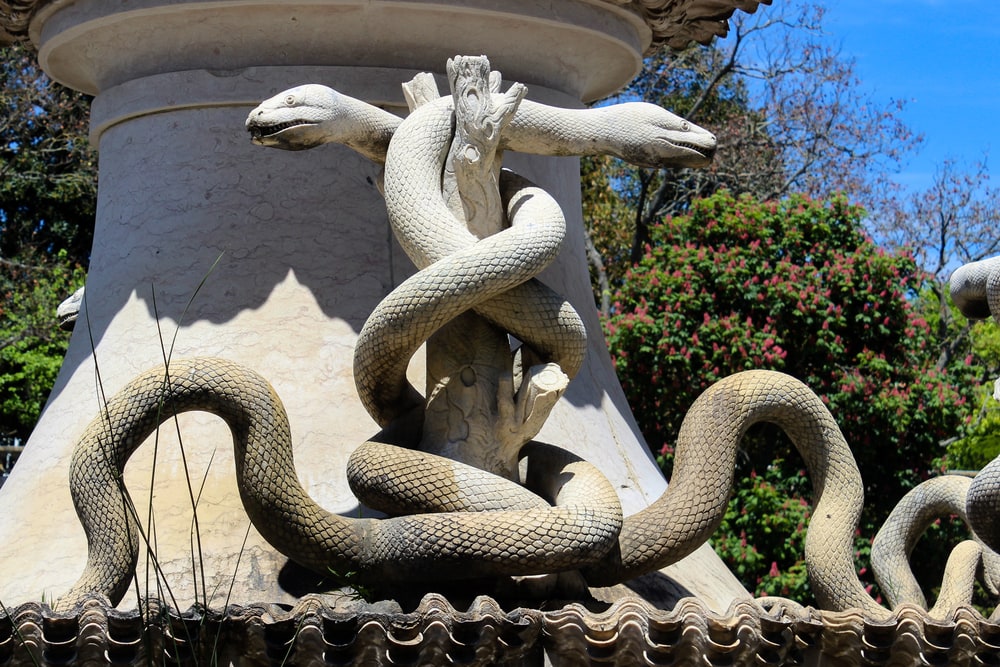
Snakes are viewed differently in various cultures. For example, the Christian story of the Garden of Eden made snakes a symbol of deception and evil. Other cultures, such as in ancient Greece, viewed snakes as a symbol of renewal, transformation, and fertility.
Snakes have a long history dating back to ancient times of being present in legends and mythological stories across the globe.
Feathered Serpent
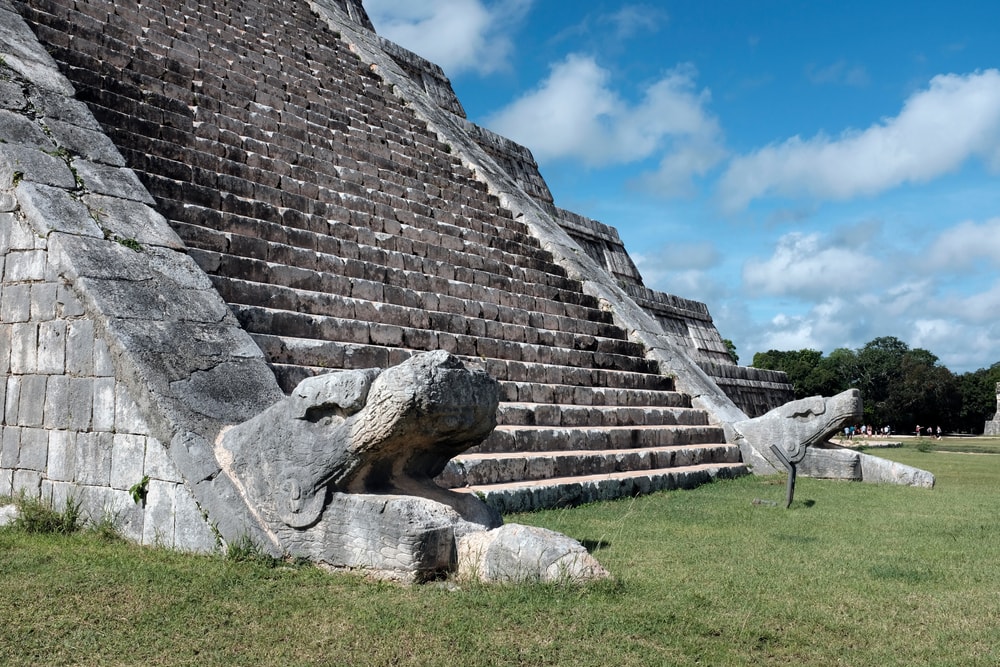
The Mesoamerican culture of the Aztecs believed the god of wind and rain, Quetzalcoatl, helped in the creation of Earth. Called the “Feathered Serpent”, Quetzalcoatl created the Earth and sky by transforming into a snake and ripping sea monster Cipactli in half.
The Semi-Divine Naga
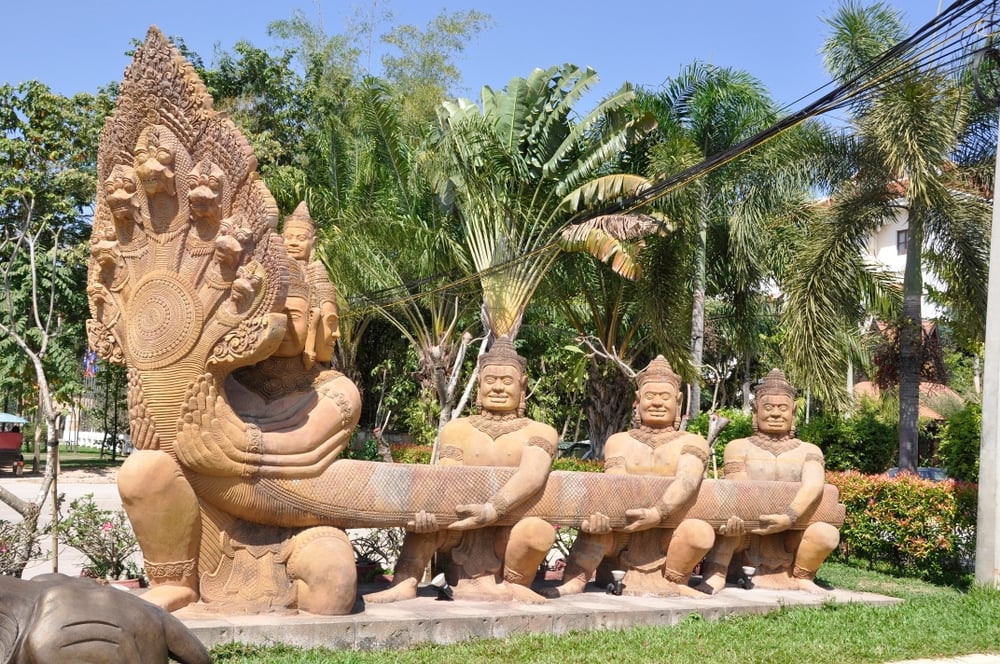
Naga was a mythical creature in the religions of Hinduism, Buddhism, and Jainism that was half-cobra and half-human. Naga was viewed as a powerful protector of the Buddha, Siddhartha Guatama.
Snake Dance of the Hopi Native American Tribe
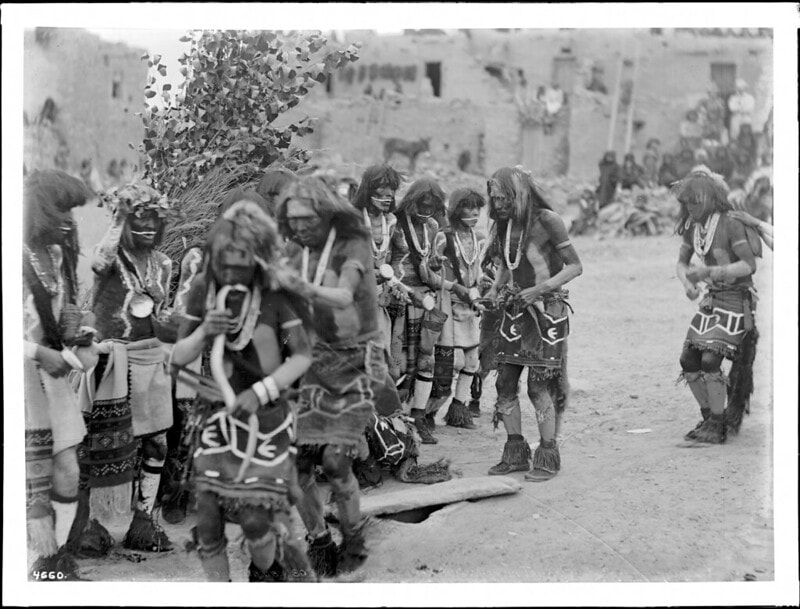
Postcard displaying the Hopi Snake Dance
The Northern Arizona Hopi tribe were known to perform the Snake Dance as a ritual to encourage land fertility and rainfall. The tribe would collect and wash snakes prior to the ceremony and then put them around their necks and in their mouths.
Fun Facts
- Not all snakes lay eggs. Some snake species produce eggs that hatch internally and give live birth. Animals capable of doing this are ovoviviparous.
- Snakes shed their skin in a process called ecdysis which helps them get rid of parasites.
- A Brazilian island named Ilha da Queimada Grande is infested with so many snakes that the Brazilian government bans people from going there. It is home to the highly venomous Golden Lancehead pit viper species.
- The fastest snake in the world is the Sidewinder and can reach speeds up to 18 miles per hour.








